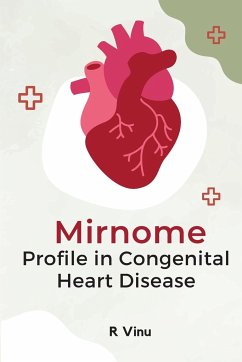Congenital Heart Disease (CHD) is one of the most common birth defects, affecting approximately 1% of newborns. The development of CHD is thought to be a complex interplay between genetic and environmental factors. In recent years, there has been a growing interest in studying the role of non-coding RNA molecules, known as the "mirnome," in the pathogenesis of CHD. This book, authored by R Vinu, presents a comprehensive analysis of the mirnome profile in patients with CHD. The author discusses the potential role of these non-coding RNA molecules in the development of CHD and their potential use as biomarkers for early detection and diagnosis of the disease. The book also explores the implications of the mirnome profile in the development of personalized medicine approaches for the treatment of CHD. The book is a valuable resource for researchers, clinicians, and healthcare professionals interested in understanding the complex pathogenesis of CHD and developing novel approaches for the diagnosis and treatment of the disease. The author's expertise in the field of molecular biology and genetics, combined with a thorough analysis of the available literature, provides a unique and informative perspective on the role of the mirnome in CHD.
